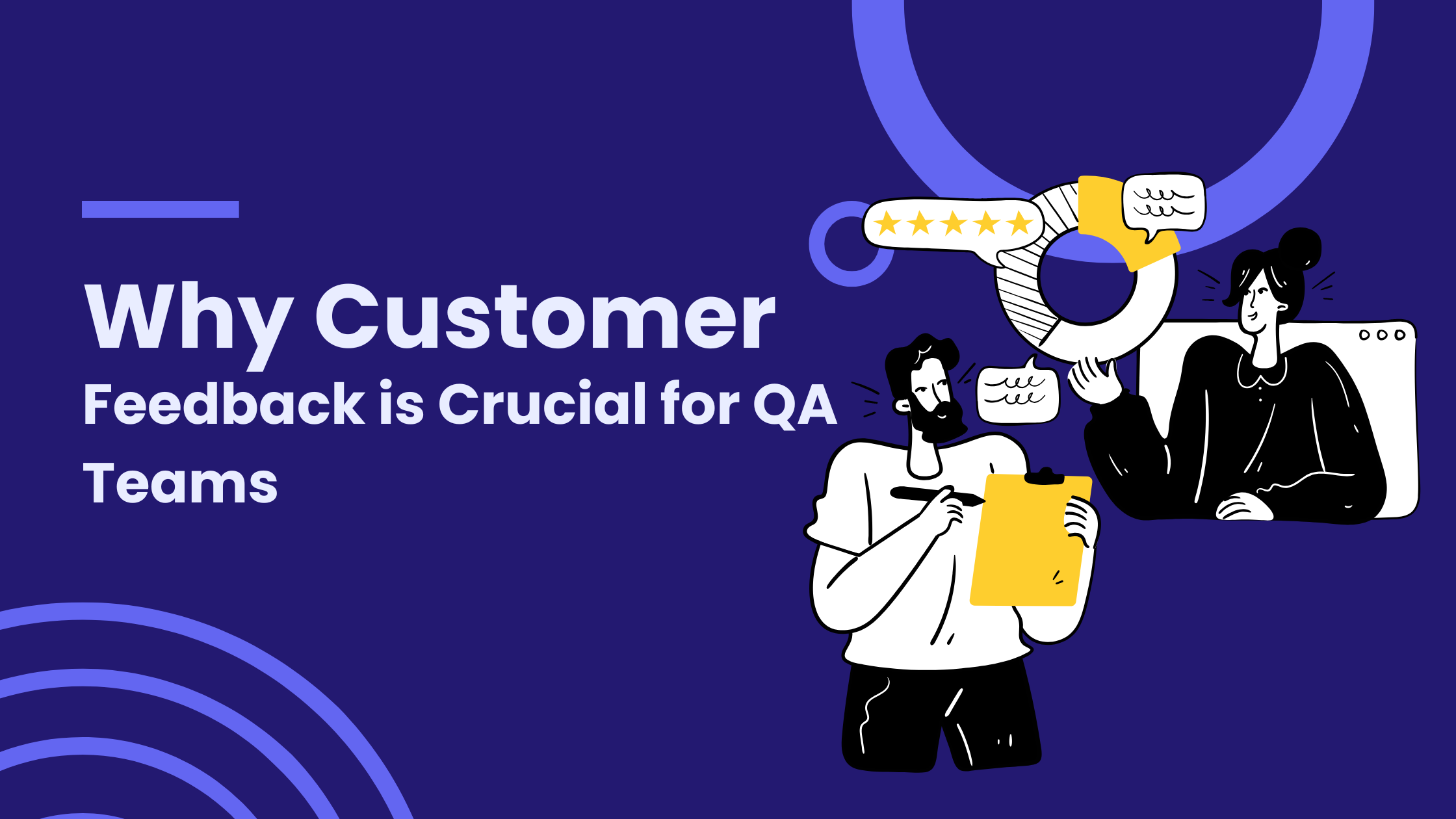Quick Listen:
Ensuring high product quality is non-negotiable. For quality assurance (QA) teams, this responsibility extends beyond traditional testing to embracing one powerful tool that often goes underutilized: customer feedback. Often seen as a passive side effect of user experience, feedback is, in reality, an invaluable asset that can significantly influence the outcome of QA processes.
The importance of incorporating customer feedback cannot be overstated as it shapes not only the quality of the product but also the level of customer satisfaction and the competitiveness of the business.
The Power of Feedback in QA
At its core, customer feedback serves as a crucial channel for enhancing product quality. While QA teams have established methods for testing functionality, customer feedback offers insights that can highlight issues that internal teams might not have noticed. Customers often experience products in ways that internal testers do not, meaning they encounter problems that might not surface in standard QA cycles.
For instance, a bug might go unnoticed during internal testing simply because the product was not used in the exact same way a customer would use it. Customers might report issues that testers may not have expected whether it's a mobile app crashing during a specific operation or a feature failing to meet user expectations. This feedback is invaluable because it directly reflects how the product will perform in real-world scenarios, not just in controlled testing environments.
Driving Continuous Improvement
A key benefit of incorporating feedback into QA is that it allows for constant refinement. A single release might fix one issue, but the customer's perspective often sheds light on new challenges that need addressing. This is where feedback-driven development comes into play. QA teams should regularly engage with customers to monitor product performance, especially after product updates or new releases.
Moreover, the process of analyzing customer feedback helps teams pinpoint not only bug fixes but also usability improvements. Feedback can reveal subtle issues that aren't immediately visible but significantly impact the user experience, such as difficulties with navigation or inconsistent design elements. By taking action on this feedback, QA teams can continuously improve the product, ensuring it remains competitive in the market.
However, it's important for QA teams to structure their approach to feedback. Gathering feedback from users across different channels be it customer surveys, online reviews, or support interactions provides a more comprehensive understanding of the product's performance. Organizing this data effectively is key to identifying actionable insights. By categorizing feedback into themes such as feature requests, bug reports, or performance issues, QA teams can address the most pressing matters first and avoid overlooking smaller but still important concerns.
The Role of Feedback in Enhancing Customer Satisfaction
Integrating customer feedback into QA processes also plays a significant role in enhancing overall customer satisfaction. When QA teams listen to and act on feedback, they demonstrate to customers that their opinions matter, which in turn fosters brand loyalty. Customers who feel heard are more likely to return, and they may even advocate for the product within their own networks.
The most successful companies understand that feedback is a two-way street. It's not just about collecting feedback but also about showing customers that their input results in tangible improvements. For example, if a customer points out a bug in a feature, and that bug is addressed in the next update, the company has not only fixed the problem but also strengthened the relationship with the customer.
Companies that use customer feedback effectively often experience higher customer retention rates and stronger customer relationships. This connection goes beyond simple customer service it's about building a feedback ecosystem where users feel their concerns are addressed, making them more likely to remain loyal to the brand.
Best Practices for Collecting and Using Feedback
First, it's essential to make the feedback collection process as seamless as possible. Many companies use surveys, direct customer interviews, and support tickets to gather insights. The easier it is for users to share their thoughts, the more likely they are to contribute valuable feedback. According to Qualtrics, using targeted surveys or tools that prompt users at key moments in their journey can yield more meaningful insights.
Finally, it's essential to close the loop. After analyzing and acting on feedback, teams should communicate the changes back to the customers. This transparency shows that the company values user input and is committed to improving the product based on real-world usage. Regularly updating customers on the status of their feedback strengthens the trust between the company and its customers.
The Future of QA with Customer Feedback
Looking ahead, the integration of customer feedback into QA processes will only grow in importance. As technologies continue to evolve and customer expectations become more demanding, QA teams must become more proactive in their approach to feedback. Automation, AI, and machine learning technologies will play a pivotal role in streamlining the feedback collection and analysis processes, enabling QA teams to respond more quickly and efficiently to user concerns.
The ability to analyze large volumes of feedback, identify emerging trends, and predict future issues will be a game-changer for QA teams. Moreover, as customer experience (CX) continues to take center stage in the business world, QA teams that leverage customer feedback will be better positioned to contribute to long-term business success. Companies that integrate feedback into their QA processes are more likely to stay ahead of competitors and create products that truly resonate with their audiences.
A Business Imperative
By listening to the voices of their customers, QA teams can drive continuous product improvement, build stronger relationships with users, and contribute to the overall success of the business. As companies continue to innovate and evolve, those that prioritize customer feedback will likely lead the way in creating products that not only meet but exceed user expectations.
You may also be interested in: The Developer vs QA Mindset: A Best Guide
Book a Demo and experience ContextQA testing tool in action with a complimentary, no-obligation session tailored to your business needs.
